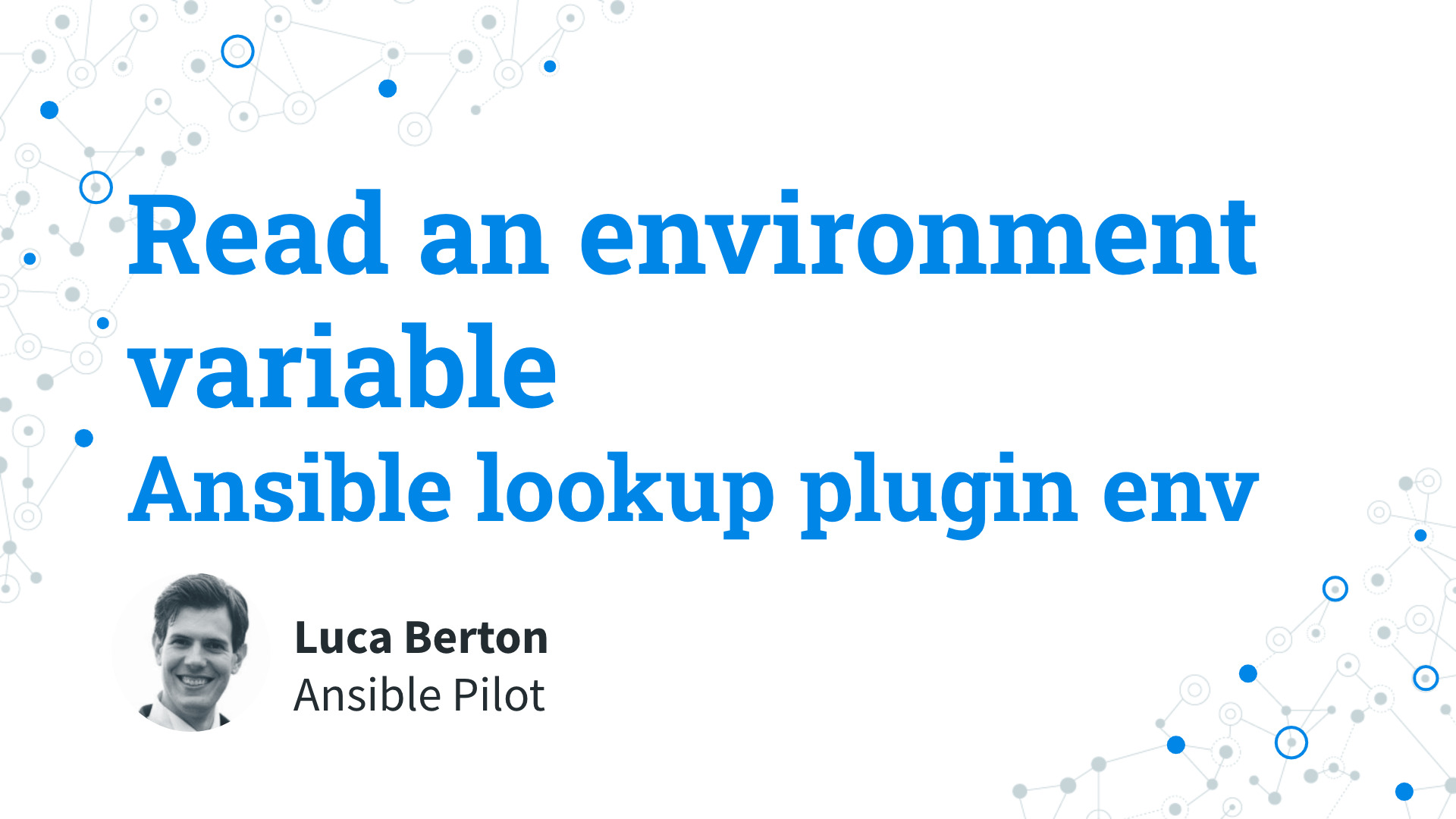How to read an environment variable on Ansible Controller with Ansible?
I’m going to show you a live Playbook with some simple Ansible code. I’m Luca Berton and welcome to today’s episode of Ansible Pilot.
Ansible read an environment variable
- ansible.builtin.env
- Read the value of environment variables
Let’s deep dive into the Ansible lookup plugin env.
Plugins are a way to expand the Ansible functionality. With lookup plugins specifically, you can load variables or templates with information from external sources.
The full name is ansible.builtin.env, it’s part of ansible-core and is included in all Ansible installations.
The purpose of the env lookup plugin is to read the value of environment variables.
Parameters and Return Value
Parameters
- _terms string - Environment variable
Return Values
- _raw list - Values from the environment variables
The parameters of plugin env.
The only required parameter is the default “_terms”, with the name of the environment variable to read. The normal usage is to assign the lookup plugin to a variable name but you could use it in your Ansible task directly.

Playbook
Read an environment variable with Ansible Playbook.
code
---
- name: environment Playbook
hosts: all
tasks:
- name: display HOME
ansible.builtin.debug:
msg: "{{ lookup('env', 'HOME') }}"
execution
ansible-pilot $ printenv | grep HOME
HOME=/Users/lberton
ansible-pilot $ ansible-playbook -i virtualmachines/demo/inventory ansible\ statements/environment.yml
PLAY [environment Playbook] ***************************************************************************
TASK [Gathering Facts] ****************************************************************************
ok: [demo.example.com]
TASK [display HOME] *******************************************************************************
ok: [demo.example.com] => {
"msg": "/Users/lberton"
}
PLAY RECAP ****************************************************************************************
demo.example.com : ok=2 changed=0 unreachable=0 failed=0 skipped=0 rescued=0 ignored=0
ansible-pilot $
idempotency
ansible-pilot $ printenv | grep HOME
HOME=/Users/lberton
ansible-pilot $ ansible-playbook -i virtualmachines/demo/inventory ansible\ statements/environment.yml
PLAY [environment Playbook] ***************************************************************************
TASK [Gathering Facts] ****************************************************************************
ok: [demo.example.com]
TASK [display HOME] *******************************************************************************
ok: [demo.example.com] => {
"msg": "/Users/lberton"
}
PLAY RECAP ****************************************************************************************
demo.example.com : ok=2 changed=0 unreachable=0 failed=0 skipped=0 rescued=0 ignored=0
ansible-pilot $
Conclusion
Now you know how to read an environment variable with Ansible. You know how to use it based on your use case.
Subscribe to the YouTube channel, Medium, and Website, X (formerly Twitter) to not miss the next episode of the Ansible Pilot.Academy
Learn the Ansible automation technology with some real-life examples in my
Udemy 300+ Lessons Video Course.

My book Ansible By Examples: 200+ Automation Examples For Linux and Windows System Administrator and DevOps

Donate
Want to keep this project going? Please donate
